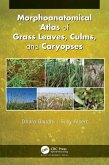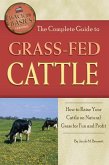Blending ecology and human history, the book traces how grasslands shaped civilizations yet became casualties of progress. Its three-part structure first decodes ecological frameworks, explaining concepts like trophic cascades through vivid examples: removing wolves alters river paths via deer overgrazing. Middle chapters dissect modern stressors, using case studies from North American prairies to African savannas. Final sections propose solutions, merging Indigenous pastoral wisdom with AI-driven conservation models. Unique to this work is its "systems-thinking" lens, framing grasslands as economies where fungi trade carbon for nitrogen and grazers "manage" vegetation through migration.
Written with journalistic flair, Grass Plain Webs transforms data-from soil microbe isotopes to satellite-tracked herds-into compelling narratives. It stands out by linking prairie restoration to global carbon markets and showing how crop diversity mimics natural resilience. Practical insights empower farmers, policymakers, and educators, making ecology tangible. By framing grasslands as mirrors of humanity's relationship with nature, the book challenges readers to see stewardship not as control, but as collaboration with life's interconnected web.
Dieser Download kann aus rechtlichen Gründen nur mit Rechnungsadresse in A, B, BG, CY, CZ, D, DK, EW, E, FIN, F, GR, H, IRL, I, LT, L, LR, M, NL, PL, P, R, S, SLO, SK ausgeliefert werden.









